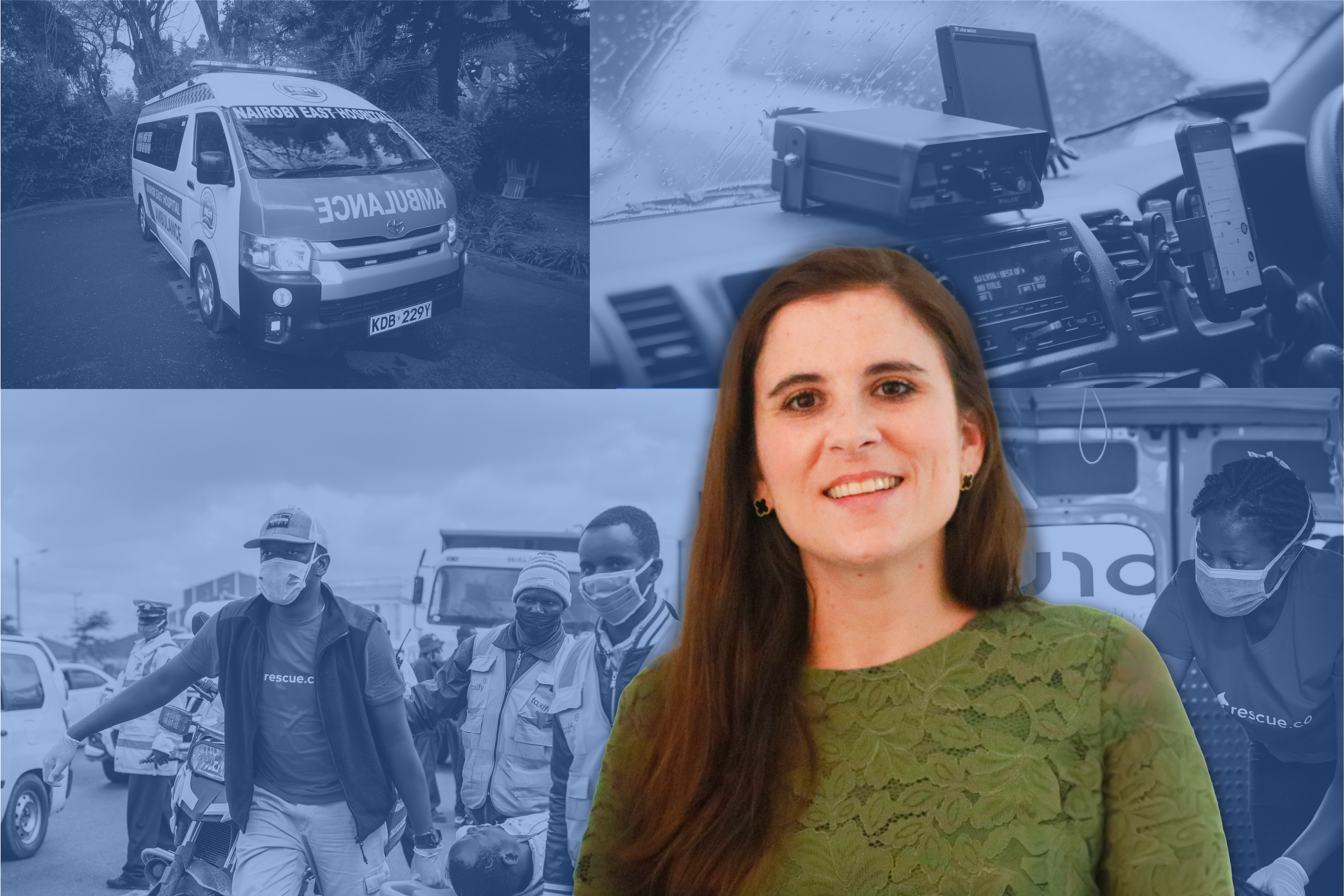What If You Fell Ill and Couldn’t Call an Ambulance?
-
-
Slice of MIT
Filed Under
A new mother faces a life-threatening complication: Doctors believe she has a retained placenta and needs surgery, but the hospital has no operating theater. What can they do?
This happened in Kenya not long ago, and they called an ambulance through Flare, an emergency service cofounded by Caitlin Dolkart MBA ’16.
Before Flare launched in 2017, the response time for an ambulance in the capital—which did not have a 911-equivalent service—averaged 162 minutes. This was true even though the medical standard for effective emergency care is one hour or less, the so-called “golden hour.” “Most people can’t survive an emergency for nearly three hours,” Dolkart says.
Today, Flare’s response time in Nairobi averages 15 minutes—and the company is the largest provider of emergency services in the country. Operating as rescue.co, Flare provides 24/7 emergency care by connecting patients to ambulances; it uses its own technology platform to keep tabs on available hospital services and to track ambulances in real time.
In the US, you don’t think of having a baby as an emergency. [In Kenya,] it's totally different. You hear all the time about a mother losing her life because she couldn’t get a C-section.
“In the US, you don’t think of having a baby as an emergency,” says Dolkart, a native of Chicago who now lives in Kenya, noting that a small percent of the hospitals there have an operating theater. “Here it’s totally different. You hear all the time about a mother losing her life because she couldn’t get a C-section.”
According to Flare’s internal research, two-thirds of the world and 95 percent of Africa effectively have no 911-type service—even though many areas have emergency numbers listed online. “Most 911 numbers do not link to an actual service,” Dolkart explains. In Kenya, for example, the number (999) is answered by police, who are not equipped to provide or dispatch medical assistance.
In contrast, Flare provides transportation for all medical emergencies, from falls to strokes to car crashes. But operating as it does in a country with limited medical resources, its ambulances often do even more.
When Flare got the call about the retained placenta, for example, the ambulance team it dispatched performed an ultrasound—using technology the hospital did not have. They discovered that the mother did not have a retained placenta; she had an unborn twin. So, instead of transporting the mother to another hospital, they delivered her second baby.
Early Interest in Health Care
Always passionate about health care, Dolkart was planning to become a doctor when she graduated from Vanderbilt University in 2007. She initially went into consulting to gain real-world experience before medical school—then discovered “there’s so much more to health care,” including work in policy and operations.
Dolkart next took a position with the nonprofit Clinton Health Access Initiative (CHAI) working to coordinate existing resources to combat malaria in East Africa. “Through my time at the Clinton initiative, I had come to see how powerful the private sector can be—if correctly directed or channeled—in building health care in emerging markets,” she says.
So, she set a new goal—to work in the investment sector to support health care in emerging markets. That brought her to MIT for her MBA, where she focused on finance. But soon, she says, “I was starting to wonder what it would look like if I started a company myself.”
Dolkart earned a fellowship from MIT’s Legatum Center for Development and Entrepreneurship, thus joining a program focused on developing principled leaders who improve the lives of others through entrepreneurship. During the program, Dolkart began looking for a problem to solve related to supply and demand. Having lived in Kenya during her time with CHAI, she was familiar with the challenge of accessing emergency care and dove into learning more.
Legatum helped pay for the second year of Dolkart’s MBA and provided additional funding for her to do market research into Kenya’s emergency resources the summer after she graduated. That’s when she realized there was a real opportunity to both fill a health-care need and build a business in the country.
Matching Supply with Demand
“The genesis of Flare was the assumption that you don’t have 911 or emergency service because you don’t have ambulances,” says Dolkart, who teamed up on the project with Maria Rabinovich, now Flare’s cofounder and co-CEO, who led the development of Flare’s proprietary software. “We quickly dispelled that [assumption].”
The real problem, she discovered, was a lack of central coordination of existing services. So, Flare gathered data on the country’s resources and then built a system for matching needs with services. Launched with startup funding from investors, Flare is now supported by subscription; many companies provide access to the service as an employee benefit.
Already profitable, Flare is continuing to scale up; it recently added air evacuation transport capabilities. (Dolkart says two-thirds of the world lacks effective emergency management services.) The company has handled about 30,000 emergency evacuations since launch, and Dolkart notes she is particularly proud of the impact Flare is having on maternity and newborn care.
“It’s so much more than 911. Of course, we respond to someone who’s been in a road accident, or had a heart attack, or is in a sports event and twists their ankle and breaks a bone—we do all that. But a lot of what we do is maternity and newborn emergencies where a woman is already at a hospital and you’ve got to get them to the next place that can provide the care,” she says. “Those are the stories I connect with most, both being a mother and knowing it shouldn’t be that way.”
Photo illustration by Gretchen Neff Lambert; images courtesy of Flare.









